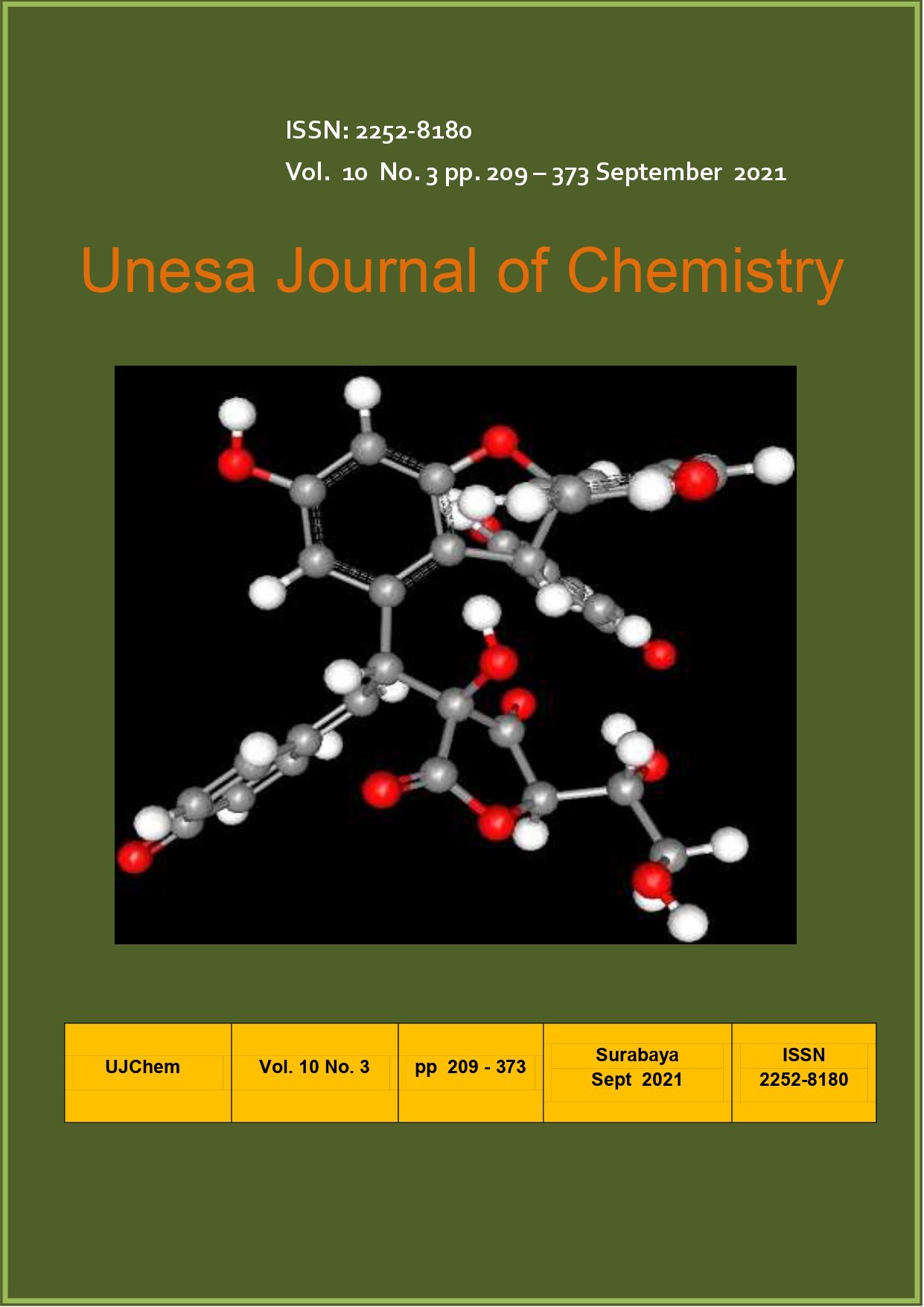STUDI ELEKTROKIMIA EKSTRAK BETALAIN UMBI BIT SEBAGAI PEWARNA ALAMI DSSC (DYE SENSITIZED SOLAR CELL) ELECTROCHEMICAL STUDY OF BEETROOT BETALAIN EXTRACT AS NATURAL DYES DSSC (DYE SENSITIZED SOLAR CELL)
Main Article Content
Downloads
Download data is not yet available.
Article Details
How to Cite
Lestari, E. A. I., & Setiarso, P. (2021). STUDI ELEKTROKIMIA EKSTRAK BETALAIN UMBI BIT SEBAGAI PEWARNA ALAMI DSSC (DYE SENSITIZED SOLAR CELL): ELECTROCHEMICAL STUDY OF BEETROOT BETALAIN EXTRACT AS NATURAL DYES DSSC (DYE SENSITIZED SOLAR CELL). Unesa Journal of Chemistry, 10(3), 318–325. https://doi.org/10.26740/ujc.v10n3.p318-325
Issue
Section
Articles

